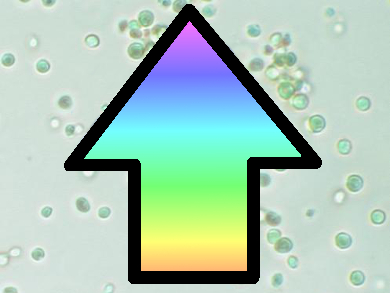Microalgae absorb solar radiation in the range of 400 to 700 nm for photosynthesis. A large fraction of the solar spectrum, i.e., over 50 % of the incident solar energy, is left unutilized and is even damaging to algae grown in open ponds or sunlight photobioreactors as the infra-red radiation causes overheating of those systems.
Gadi Suraishkumar, Indian Institute of Technology Madras, Chennai, India, and colleagues used photon up-conversion – a process whereby lower energy radiations are converted to higher energy levels via the use of appropriate phosphor systems – of infra-red radiation in order to make a larger fraction of the sunlight usable for photosynthesis. Thereby the team increased the growth-rate of the algae, while at the same time avoided overheating of the system. In crystal systems of up-conversion phosphors (UCPs), the energy of multiple low-energy photons is added and emission of high-energy photons is possible, which then are used for photosynthesis.
Two different UCPs were tested and an increase of biomass is found for both UCPs in model microalgae Chlorella vulgaris. For one of the UCPs the specific growth rate is 3-fold higher compared to the control. Therefore, the use of UCPs can in fact improve cultivation of photosynthetic organisms by increasing the utilization range of the sun’s electromagnetic spectrum.
- Photon up-conversion increases biomass yield in Chlorella vulgaris,
Kavya R. Menon, Steffi Jose, Gadi K. Suraishkumar,
Biotechnol. J. 2014.
DOI: 10.1002/biot.201400216




